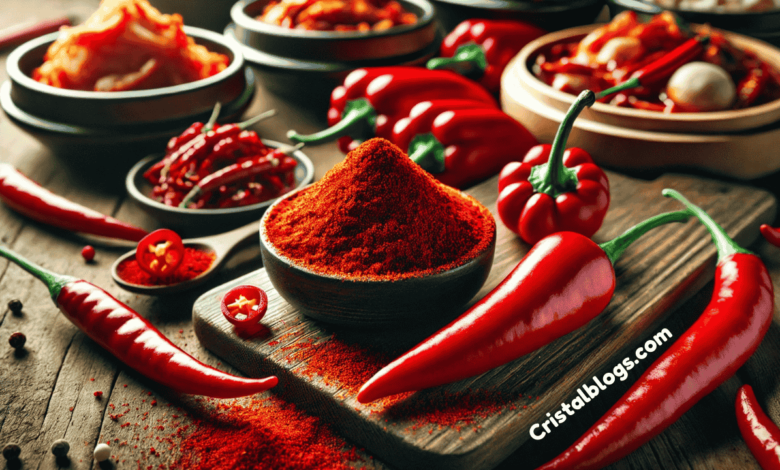Spicy Delight: The Korean Chili Pepper Piment Coréen Schoville

The Korean chilli pepper, often recognized under the name Piment Coréen, plays a pivotal role in Korean cuisine and beyond, adding a unique blend of heat and flavour to numerous dishes. In this comprehensive guide, we dive into the spicy world of this chilli pepper, exploring its culinary uses, health benefits, and placement on the Schoville scale.
What is Piment Coréen?
Piment Coréen refers to the chilli peppers widely used in Korean cooking. These peppers are known for their vibrant red colour and moderate spiciness. The most common form of this chilli is Gochugaru, a coarse ground powder made from sun-dried chillies.
The Schoville Heat Scale and Piment Coréen
The Schoville scale measures the pungency (spicy heat) of chilli peppers, as observed in Schoville Heat Units (SHU), based on the concentration of capsaicinoids. Piment Coréen typically ranges from 4,000 to 8,000 SHU, positioning it between milder peppers like paprika and hotter varieties like jalapeños.
Culinary Uses
In Korean cuisine, Gochugaru is indispensable. It’s used to make kimchi, the nationally beloved fermented cabbage dish, and stews and sauces that define the cuisine’s rich flavours. From the spicy kick in Kimchi Jjigae (kimchi stew) to the depth it adds to Sundubu Jjigae (soft tofu stew), Piment Coréen is versatile. Its ability to enhance the umami and complexity of dishes without overwhelming the palate makes it a favourite among chefs and home cooks.
Nutritional Profile and Health Benefits
Rich in vitamins A, C, and E, Piment Coréen improves skin quality, enhances immune function, and reduces oxidative stress. The capsaicin in these peppers has been noted for its potential metabolic benefits, including aiding in weight loss and improving digestion.
Growing and Harvesting
Thriving in well-drained, sunny environments, Piment Coréen requires careful cultivation. In Korea, these peppers are often grown in greenhouses to safeguard them from pests and harsh conditions, ensuring the high quality of the chillies.
Piment Coréen in Global Cuisine
While rooted deeply in Korean traditions, Piment Coréen has found its way into global cuisine, showing up in everything from Italian arrabbiata sauce to Mexican mole. The international culinary community has embraced its unique flavour profile, incorporating it into innovative dishes and fusion cuisines.
DIY Tips for Cooking with Piment Coréen
For those looking to incorporate Piment Coréen into their cooking, it can be used in various forms, such as flakes, powders, or pastes. When cooking with Gochugaru, start with a small amount and adjust according to spice preference. It blends well with other ingredients, enhancing dishes without overpowering them.
Storing Piment Coréen
Piment Coréen should be stored in an airtight container in a cool, dark place to preserve its flavour and potency. This prevents the spice from losing its pungency and becoming stale.
Conclusion
Piment Coréen is more than just a spice; it’s a cultural emblem representing the heart of Korean cuisine. Its versatile flavour profile complements traditional Korean dishes and enhances modern recipes worldwide. Whether you’re a seasoned chef or a curious foodie, exploring the heat and depth of Piment Coréen can transform your culinary experiences.
FAQs on Piment Coréen Schoville
What makes Piment Coréen different from other chilli peppers?
Piment Coréen, commonly known as Gochugaru in its ground form, stands out due to its vibrant red colour, moderate heat, and unique flavour profile. It has a balanced spice level, falling between milder peppers like paprika and hotter varieties such as jalapeños, making it versatile in various dishes. Its complex flavour enhances umami without overwhelming the palate, which is why it’s popular in Korean cuisine.
Can Piment Coréen be used in non-Korean dishes?
Yes, Piment Coréen is increasingly used in international cuisines, from Italian arrabbiata sauce to Mexican mole. Its moderate heat and depth of flavour make it a perfect ingredient for fusion dishes, offering a subtle spicy kick without being too intense.
How does Piment Coréen benefit health?
Piment Coréen is rich in vitamins A, C, and E, which support epidermis health and immune function and reduce oxidative stress. Additionally, capsaicin, the active compound in the chilli pepper, is known for its potential benefits, such as aiding digestion and possibly helping with weight loss by boosting metabolism.
How should I store Piment Coréen to maintain its freshness?
To preserve the freshness and potency of Piment Coréen, store it in a cool, dark place in an airtight container. This helps prevent the chilli powder from losing its pungency or becoming stale due to exposure to light and air.
What dishes benefit from using Piment Coréen?
Piment Coréen is a key ingredient in many traditional Korean dishes, including kimchi, kimchi stew (Kimchi Jjigae), and soft tofu stew (Sundubu Jjigae). Its depth of flavour and moderate heat enhance these dishes, bringing a distinct taste essential to Korean culinary traditions.


